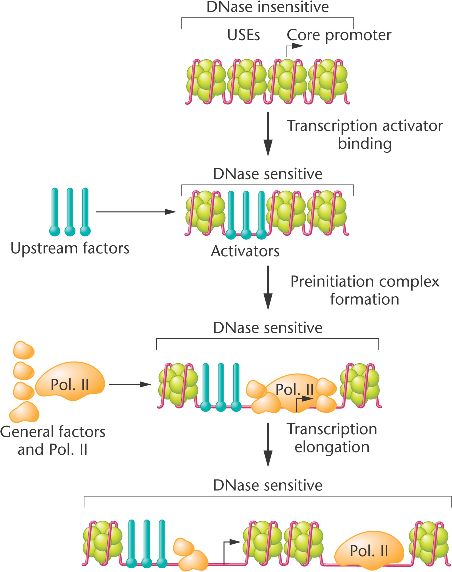 When DNA is tightly bound with histones, the heterochromatin
that os formed is inaccessible to enzymes such as DNAse
as well as RNA polymerase II.
When DNA is tightly bound with histones, the heterochromatin
that os formed is inaccessible to enzymes such as DNAse
as well as RNA polymerase II.
Chromatin remodeling involves transcriptional activators
in eukaryotic chromosomes is combined with histones and nonhistone proteins to form chromatin. Some chromosomal regions are highly condensed in the interphase nucleus and form transcriptionally inert . Investigators have shown that genes in transcriptionally inert regions of the genome are relatively resistant to in vitro digestion with DNAse I. Euchromatic regions on the other hand, have an open chromatin configuration, and are sensitive to DNAse I digestion. Genes in these regions can be transcribed. Nucleosomes can inhibit multiple steps required for gene transcription.
The binding of enhancer transcription factors requires accessing nucleosomal DNA and may result in displacement of the nucleosome.
Similarly, the formation of the basal transcription complex at the TATA box, other upstream elements (USEs) and the core promoter site is also suppressed by nucleosomes.
Finally, RNA polymerase II is slowed by the presence of nucleosomes.